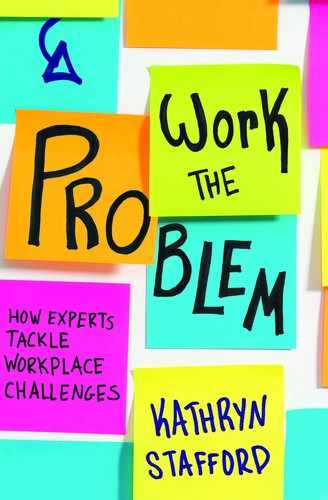TAKE 2
Commentary by Sharlyn Lauby
Sharlyn Lauby is president of ITM Group and author of the blog HR Bartender.
I view this as a performance management issue on several fronts: First, there’s inconsistency. Nolan’s team doesn’t follow the same performance management process as everyone else. Second, individual attention is decreasing. Nolan’s team isn’t setting goals and doesn’t have regular one-on-one meetings to discuss performance. Finally, investments aren’t being made to help managers succeed. Camila senses that Nolan is overwhelmed and not able to keep up with his team.
Today, there are companies advertising that “if you come to work for us, we won’t subject you to the dreadful annual performance review.” Performance management is so much more than performance reviews, but this perception has become an obstacle that, as shown in this case study, must be dealt with.
To fully address this problem, I would also like to know:
• What kinds of training and development do managers at Auruco receive? Do managers receive training on how to conduct one-on-one meetings and performance reviews?
• How did Auruco introduce the forced distribution method? Why was this method chosen? Were managers given the opportunity to buy into the concept, and has it been effective?
• What’s the current performance of Nolan’s team? Are his methods effective? Is his team’s performance suffering?
• Do any other managers share Nolan’s concerns? Is this situation unique to him and his department, or do others feel the same?
• The new CEO wants more of a talent acquisition and development focus, which implies that there isn’t one now. What’s going on? And does Camila have the authority to do anything?
While it’s possible that we’ll never have all this information, the more understanding we can get, the easier it would be to proceed.
For Camila to be an effective coach, she must build trust and credibility. Based on this scenario, one might assume that Nolan won’t be agreeable to “coaching” per se, but if Camila can come across as a trusted adviser, he might respond to her suggestions. I’d suggest one-on-one meetings where they can clear the air; the lunch meeting seems like a good start. While the forced distribution policy is no longer in place, Nolan’s mistrust of HR still exists, and in his mind, Camila is part of HR. If Camila has some understanding of what happened with the policy, she might be able to convince Nolan that it won’t happen again under her watch.
Camila is also going to have to figure out what the company goals are, and which ones are worth going to battle over. What are Auruco’s vision, mission, and values? Does the company believe and live them? Think of this as a gap analysis—where is the company now, and where does it want to be? Camila can bring that same analysis to the HR department.
I would suggest to Camila that she find out her boundaries and her supporters. What can she do and how much authority does she have? If she was handpicked by the CEO, what boundaries have been established for her? Were employees informed of these boundaries when she started? She has to prove that she’s qualified and earn people’s respect. The same is true for Nolan. It’s OK to express concerns about a company policy, but he must know that inconsistency can breed employee dissatisfaction, turnover, and lawsuits.
For its part, Auruco needs to establish performance standards, develop methods to evaluate performance, and then communicate those expectations. Part of this is figuring out what it’s going to do about its “rock star” policy. Some companies are OK when very talented people don’t follow the rules, but others aren’t. The answer to that question says a lot about company culture and the way decisions are made. Either way, Auruco needs to make its position known. Employees are watching. If the company decides to condone this behavior, it opens the door to more of it.
Some of Auruco’s problems are management issues that should be addressed in its development programs, provided the company has them. New managers should be onboarded and given the tools to do things like:
• Provide feedback to employees and senior leadership.
• Build consensus and collaboration.
• Conduct one-on-one meetings with employees.
• Evaluate performance.
• Practice self-awareness and self-management.
But if managers aren’t receiving effective training, how do you get the organization to recognize that? This is where Camila has an advantage. As someone new to the organization, she has fresh eyes. She can use them to identify where training programs are nonexistent or need to be strengthened.
